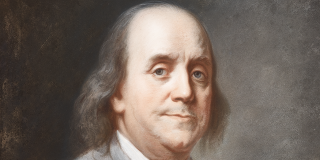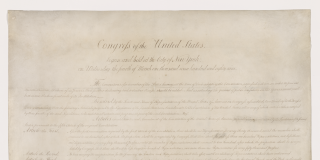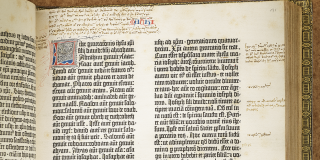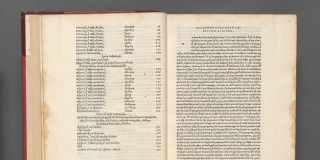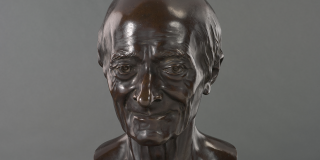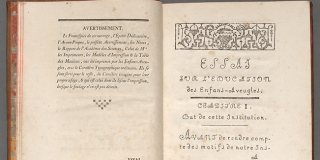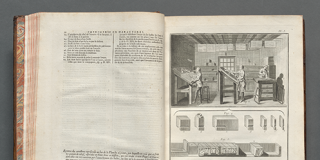
Biblia Latina
Mainz, Germany: Johannes Gutenberg, 1455
Rare Book Division
Biblia Latina
Johannes Gutenberg (ca. 1398–1468) of Mainz, Germany, is credited as the first European to employ movable metal type in the production of books. This technology—coupled with his use of oil-based inks and a mechanical printing press—enabled the mass production of nearly identical texts, facilitating the spread of knowledge and literacy. Likely completed during the autumn of 1455, the Gutenberg Bible came to embody the revolution in print and is a cornerstone of printing in the West. Approximately 180 copies of the Bible were printed; 48 are known to survive. Collector and Library founder James Lenox acquired the Library’s copy, the first one brought to the Americas, in 1847. Its arrival in New York is the stuff of romantic legend: Lenox’s agent instructed the Customs House officers to remove their hats upon seeing it, a tribute to this work’s historical importance.
Currently on View at Stephen A. Schwarzman Building
The New York Public Library believes that this item is in the public domain under the laws of the United States, but did not make a determination as to its copyright status under the copyright laws of other countries. This item may not be in the public domain under the laws of other countries. Though not required, if you want to credit us as the source, please use the following statement, "From The New York Public Library," and provide a link back to the item on our Digital Collections site. Doing so helps us track how our collection is used and helps justify freely releasing even more content in the future.
